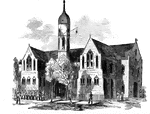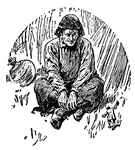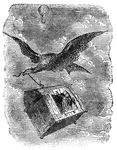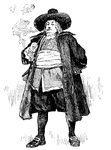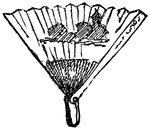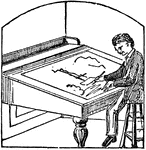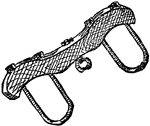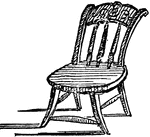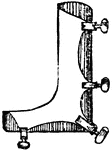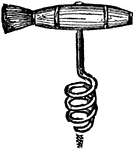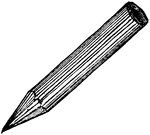
Edward Lear
There was an old person of Mold; Who shrank from sensations of cold; So he purchased some muffs; Some…

Edward Lear
There was an old person of Sparta; Who had twenty-five sons and one daughter; He fed them on snails;…
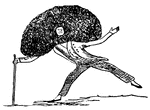
Edward Lear
There was an old person of Dutton; Whose head was as small as a button; So to make it look big; He purchased…

Romanesque Church
Line drawing of a large Romanesque church. The illustration is similar to the Imperial Cathedral Basilica…

Second Naval Battle
"Second naval battle in Hampton Roads- fight between the Federal ironclad Monitor, of two guns,…

Federal Prisoners
"Federal cavalry covering the escape of Federal prisoners from Libby Prison, Richmond, Va. The feeling…

Falling Waters
"Gallant charge of the Sixth Michigan cavalry over the enemy's breastworks, near falling Waters, Md.,…
War in Texas
"The War in Texas. Brownsville, occupied by the army under Major General N. P. Banks, in 1863. The sudden…

Battle of Ream's Station
"The Siege of Petersburg. Battle of Ream's Station- the attempt of the enemy to regain the Weldon Railroad…
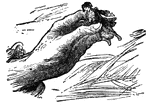
Giant hand holding Gulliver
One of the giants in Brobdingnag picks Gulliver up to get a closer look.
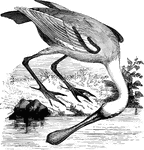
Roseate Spoonbill
Drawing its name from the widing of its bill towards the tip, the spoonbill frequents coastal and marshy…
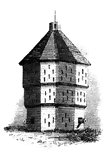
Fort Plain
Fort Plain block-house. There is considerable confusion in the accounts concerning Fort Plain, for which…
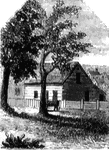
Red House
The Red House. The "Red House" is situated upon the street in Wilkesbarre next the river, and about…

Floating Battery
"American Floating Battery. I am indebted to the kindness of Peter Force, Esq., of Washington city (editor…

Society of the Cincinnati
"Society of the Cincinnati, member's certificate. This engraving is a fac simile of a certificate, about…

Parr
"Found in European waters, and being marked on the back by transverse dusky bars very similar to those…
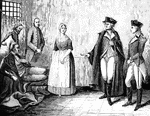
Colonel Rall
"Washington's visit to Colonel Rall. This is a copy, by permission, of a picture by Flagg, in the possession…

Walnut Street Prison
"The Walnut Street Prison. This edifice was erected in 1774, and taken down in 1836. The beautiful new…

Jamestown Island
"Distant view of Jamestown Island. This view is from the north side of what was once a marsh, but now…
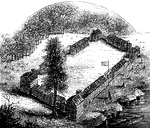
Boone's Fort
"Boone's Fort. This sketch is from a drawing by Colonel Henderson, and published in Collin's Historical…
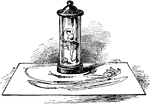
Anamorphoscope
"An optical toy consisting of a vertical cylindrical mirror which gives a correct image of a distorted…
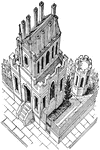
Anamorphosis
"A method of drawing which gives a distorted image of the object represented when it is viewed from…
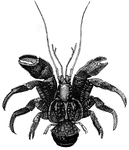
Purse-crab
"The Purse Crab, Birgus Latro is a very curious species found in Amboyna and some of the adjacent…
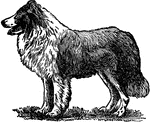
Collie
"Collie is a breed of the dog of obscure origin, which is highly valued. Many anecdotes are told of…

Hand seat
"Showing how the Improvised Three-Handed Seat may be used to carry an Injured Person. The picture also…
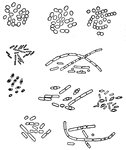
Milk bacteria
"Different Kinds of Milk Bacteria. It is not uncommon for a large number of person to be poisoned from…

Abacus
An abacus is denoted primarily a square tablet of any description, and was hence employed in the following…
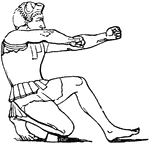
Arcus
"The bow used for shooting arrows, is one of the most ancient of all weapons, but is characteristic…
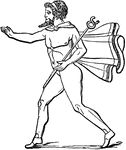
Caduceus
"The staff or mace carried by heralds and ambassadors in time of war. This name is also given to the…
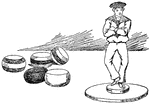
Jack's Alive
A game which consits of figure of a sailor cast in metal and a number of colored balls, and three drawing-pins.
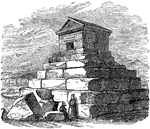
Tomb of Cyrus
"Cyrus caught sight of his brother Artaxerxes, whose person was revealed by the flight of his troops,…
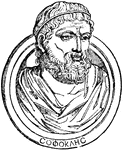
Sophocles
"Sophocles, the younger rival and immediate successor of Aeschylus in the tragic art, was born at Colonus,…

Lectica
"Lectica was a kind of couch or litter, in which persons, in a lying position, were carried from one…

Rhyton
"A drinking-horn. Its original form was probably the horn of the ox, but one end of it was afterwards…
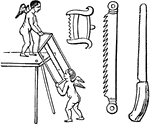
Serra
"Serra, a saw. It was made of iron. The form of the larger saw used for cutting timber is seen in the…

Vitta
"Vitta, or plural vittae, a ribbon or fillet, is to be considered, as an ordinary portion of female…

Salute
"Raise the right hand smartly till the tip of the forefinger touches the lower part of the headdress…
Rifle Salute
"Carry the left hand smartly to the small of the stock, forearm horizontal, palm of hand down, thumb…
Rifle Salute
"Carry the left hand smartly to the right side, palm of the hand down, thumb and fingers extended and…
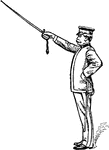
Drawn Saber
"When publishing orderes, calling the roll, etc., the saber is held suspended from the right wrist by…
Egyptian Kitchen - Roasting a Goose
"A cook roasting a goose; he holds the spit with one hand, and blows the fire with a fan held in the…
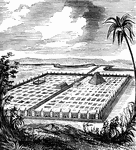
Babylon
"Babylon is said, by some writers, to have owed its foundation to Queen Semiramis, a person whose history,…
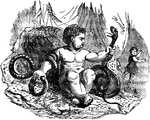
Young Hercules
"Hercules, a Theban prince, was another of the descendants of Pelops. The numerous and extraordinary…
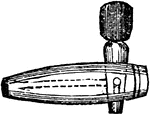
Faucet
A fixture for drawing liquor from a cask or vessel, consisting of a tube stoped with a peg, spigot,…

